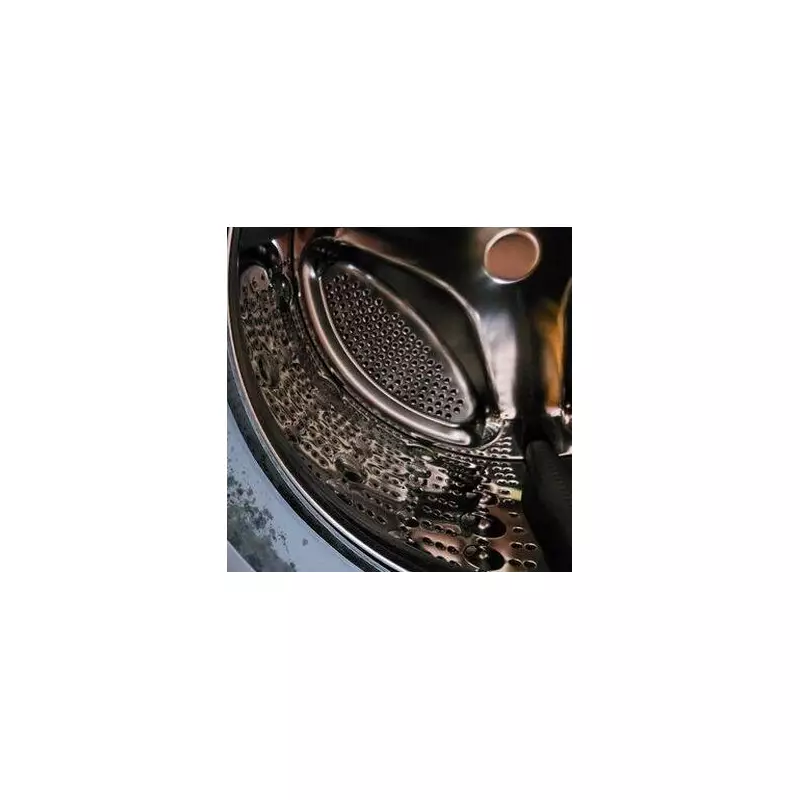
That unmistakable whiff of dampness and mildew when you open your washing machine door is a household nightmare. But before you consider an expensive replacement or call-out, the solution is likely already in your kitchen cupboard.
Ignoring a smelly machine isn't just about unpleasant odours; it can lead to mould buildup that transfers onto your supposedly clean clothes and even affects the appliance's performance. The good news? A deep clean is simpler and far cheaper than you think.
Why Your Washing Machine Develops That Nasty Smell
The primary culprit behind that damp, musty smell is a combination of soap scum, limescale, and moisture trapped in the machine's hidden parts. Every wash leaves behind a residue of detergent and fabric softener, which mixes with hard water minerals to form a grimy film. This sticky substance, combined with the dark, damp interior, creates the perfect breeding ground for mould and bacteria.
Cooler wash cycles, while energy-efficient, often don't generate enough heat to kill these microbes, allowing the problem to fester cycle after cycle.
The Step-by-Step Cure: Your Weaponry Against Grime
You won't need any expensive, specialised products for this mission. The most effective cleaning arsenal consists of two powerful, natural ingredients: white vinegar and bicarbonate of soda.
What You'll Need:
- 250ml of white vinegar
- 4 tablespoons of bicarbonate of soda
- A clean, damp cloth
- A small bowl or cup
The Cleaning Process:
- Start with the Vinegar Wash: Pour the 250ml of white vinegar directly into the detergent drawer.
- Run a Hot Cycle: Set your machine to the hottest and longest wash cycle available (usually a cotton setting at 90°C). The vinegar will circulate, working to dissolve stubborn limescale and soap scum while killing odour-causing bacteria.
- Attack the Bicarbonate of Soda: Once the hot cycle is complete, it's time for the bicarbonate of soda. Mix four tablespoons with a small amount of water to form a thick paste.
- Scrub the Drum and Seals: Use this paste and a damp cloth to thoroughly scrub the inside of the drum, the all-important rubber door seal (a hotspot for black mould), and the detergent drawer. Pay close attention to any visible grime.
- The Second Cycle: Place the remaining bicarbonate of soda paste directly into the drum. Run another hot wash cycle, this time on a shorter setting. This will flush away any dislodged residue and leave the interior fresh.
- The Final Wipe-Down: Once the cycle finishes, leave the door and detergent drawer open to air out completely. Wipe down the exterior with a damp cloth.
How to Keep Your Machine Smelling Fresh
Prevention is always better than cure. Incorporate these simple habits into your routine to stop smells from returning:
- Leave the Door and Drawer Ajar: After every wash, always leave the door and detergent drawer slightly open. This allows moisture to evaporate completely, preventing the damp environment mould loves.
- Run a Monthly Maintenance Wash: Don't wait for the smell to return. Schedule a monthly clean using the method above or a dedicated washing machine cleaner to stay on top of grime.
- Wipe the Seal: Make a quick habit of wiping down the rubber door seal after a wash to remove lingering water and lint.
- Measure Detergent Correctly: Using more detergent than recommended doesn't make clothes cleaner; it just creates more residue. Always follow the manufacturer's guidelines.
- Occasionally Use Hot Washes: While 30°C washes are great for everyday, occasionally running a hotter wash (60°C or above) helps to dissolve accumulated residues.
By following this simple guide, you can extend the life of your appliance, ensure your laundry comes out truly clean, and finally banish that dreaded damp smell for good.





